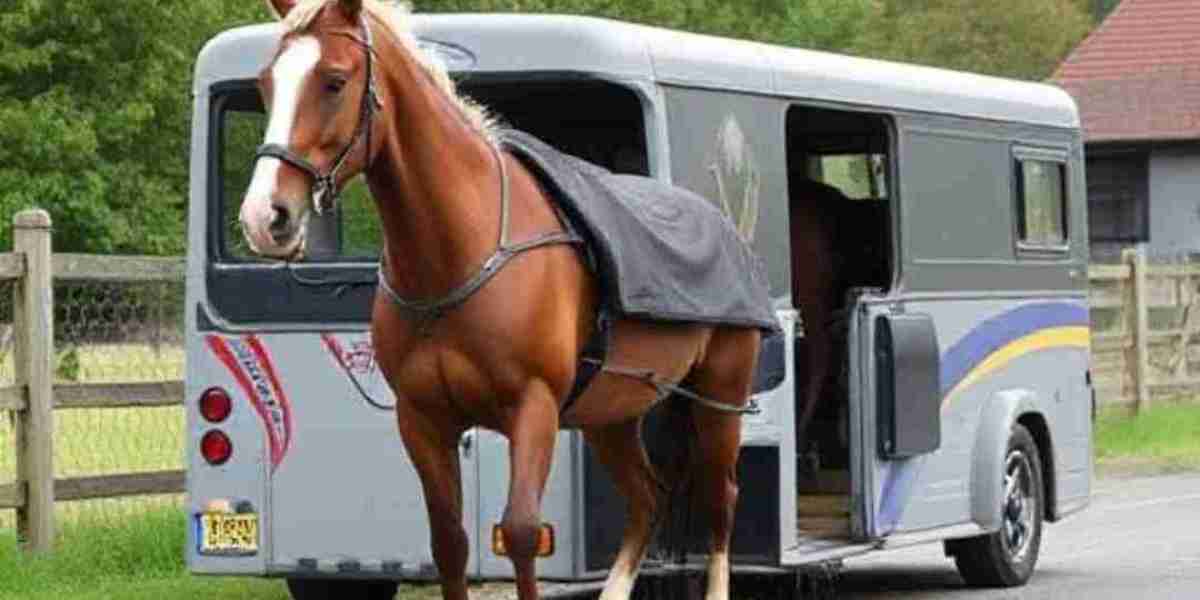When it comes to transporting horses, ensuring their safety, comfort, and well-being throughout the journey is of the utmost importance. Whether you're relocating, selling, or purchasing a new equine companion, proper delivery methods make a world of difference. In California—a state renowned for its sprawling ranches, competitive horse shows, and vibrant equestrian community—horse delivery services play a crucial role in equine logistics. This guide explores what to expect, how to prepare, and best practices for a seamless horse delivery experience in the Golden State.
Understanding the Importance of Professional Horse Delivery
Transporting a horse isn’t as simple as loading them into a trailer and hitting the road. Horses are sensitive animals that require careful handling and specific conditions during travel. Professional Horse Delivery California are staffed with experienced handlers who understand animal behavior and know how to manage potential stressors. These experts also maintain equipment designed specifically for horse safety, including well-ventilated trailers, anti-slip flooring, and dividers to prevent injury.
In a state as large and geographically diverse as California—ranging from coastal regions to mountainous areas and deserts—having seasoned professionals handle the transportation ensures your horse arrives healthy and stress-free.
Preparing Your Horse for Delivery
A successful horse delivery starts well before the trailer door closes. Preparation involves both physical and mental readiness for the journey.
1. Health Check:
Prior to transport, ensure your horse has a current health certificate and is up-to-date on vaccinations. Most delivery services require proof of Coggins testing for interstate travel, and some may also require it within California. A visit from your veterinarian can help confirm that your horse is in good condition for travel.
2. Hydration and Nutrition:
Hydration is key to preventing travel-induced colic and dehydration. Get your horse accustomed to drinking from different sources or consider flavored water if they’re picky. Provide hay during the trip to keep their digestive system working and to offer comfort.
3. Behavior Training:
If your horse isn’t used to trailers, practice loading and unloading several times before the delivery day. The more familiar the experience, the less stressed your horse will be during the actual journey.
Choosing the Right Horse Delivery Provider
In California, numerous companies offer horse transportation services, from local routes to long-distance hauls. Here’s what to look for when choosing a provider:
Experience and Reputation:
Research how long the company has been in business and read reviews from other horse owners. Reputable companies often have testimonials available and are open to answering questions about their process.
Equipment Quality:
Inquire about the type of trailers used—air-ride suspension, climate control, and custom stalls all contribute to your horse's safety and comfort. Ask for photos or a tour of their rigs if possible.
Licensed and Insured:
Ensure the company has the necessary permits for transporting livestock and carries liability insurance. This is a basic but essential requirement for any serious horse delivery operation.
Communication:
A good transporter keeps you updated on your horse’s status during the trip. Whether via text, phone calls, or GPS tracking, transparency is a sign of professional service.
The Delivery Process: What to Expect
The horse delivery process in California typically follows a clear and organized system:
Pickup:
The transporter will coordinate a pickup time and inspect the horse for any visible injuries or signs of illness. Your horse will be loaded with care, often with calming techniques if necessary.
Transit:
During transport, the driver will make regular stops to check on the horses, offer water, and assess their condition. Some companies provide rest stops for long trips, allowing the horses to stretch and recuperate.
Drop-Off:
Upon arrival, the horse is carefully unloaded and handed over to the designated recipient. The transporter may provide a brief report on how the horse fared during the journey.
It’s a good idea to have someone present at both pickup and drop-off locations who knows the horse well. Familiar faces can ease transition stress and help identify any immediate concerns.
Legal and Ethical Considerations
California has specific regulations regarding the transport of animals, especially livestock like horses. Always make sure the delivery company complies with state and federal guidelines, including the Animal Welfare Act. Ethical treatment of horses during delivery isn’t just a moral obligation—it’s the law.
It’s also worth discussing contingency plans with your delivery provider. What happens in case of mechanical failure or medical emergencies? Knowing the answers ahead of time can prevent panic and ensure swift resolution should any issues arise.
The California Advantage
One of the benefits of arranging horse delivery California-style is the state’s robust equestrian infrastructure. From dedicated horse highways to rest areas with equine accommodations, California is well-equipped for long-haul horse transportation. Additionally, the state's numerous ranches, stables, and vet clinics provide reliable pit stops and support along the way.
Whether you're moving a show horse to a competition in Los Angeles or sending a trail companion to a new home in Northern California, there are expert delivery services familiar with the state's routes and climate variations. This local knowledge translates to better outcomes for your horse’s journey.
Tips for a Smooth Horse Delivery Experience
Double-check paperwork: Ensure all necessary documents are prepared in advance, including health certificates, ownership documents, and special care instructions.
Pack a travel kit: Include extra feed, water buckets, a first-aid kit, and familiar items (like a blanket or halter) to comfort your horse.
Maintain calm energy: Horses are incredibly perceptive. If you remain calm and positive, your horse is more likely to mirror that demeanor.
Follow up post-delivery: Once your horse arrives, monitor them closely for signs of stress or illness, and provide plenty of rest and hydration.
Final Thoughts
Horse delivery in California requires a blend of expert care, detailed preparation, and trustworthy service. By choosing the right provider and prioritizing your horse’s physical and emotional needs, you can ensure a safe and successful transport experience. Whether it's a local move within a scenic valley or a cross-state trek through varying terrain, your horse deserves a delivery process that treats them with the respect and attention they need.
With the right planning and professional support, horse delivery becomes less about logistics and more about starting a new chapter—calm, confident, and ready to ride.








